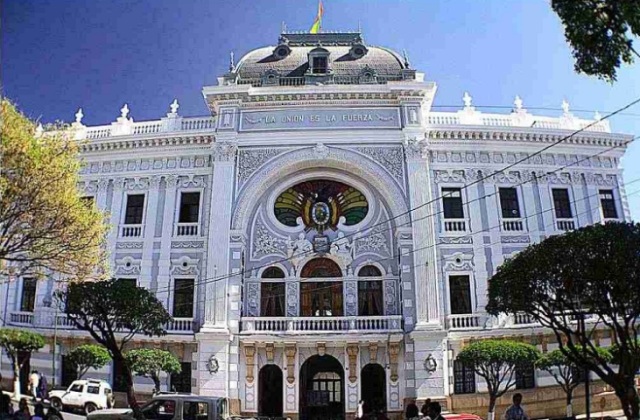Bolivia is a landlocked country in South America. Here are some interesting and fun facts about Bolivia.
Facts About Bolivia
Bolivia, a landlocked country in South America, is known for its cultural wealth. It is bounded by Brazil on the east; while its other neighbors are Peru and Chile on the west and Argentina and Paraguay on the south. It has vastly varied Amazonian and Andean landscapes, as well as remnants of civilizations of the yesteryears. The western part of the country, enclosed by two chains of the Andes, is a great plateau. The Oriente, a lowland region having rain forests and grasslands, comprises the northern and eastern two-thirds of the country. Climate of Bolivia varies with altitude. It ranges from humid and tropical to cold and semi-arid. Christened after independence fighter Simon Bolivar, Bolivia achieved independence from Spanish rule in 1825. Before the European colonization, the Inca Empire ruled the Andean part of Bolivia. The Inca Empire was the largest state in the Pre-Columbian America. Below are some interesting facts about Bolivia. 

Image: By Valdiney Pimenta from Campinas - SP, Brazil (Prefeitura de Sucre) [CC-BY-2.0 (http://creativecommons.org/licenses/by/2.0)], via Wikimedia Commons
Fast Facts
Continent: South America
Area: 1,098,581 km2
Capital: Sucre
Population: 10,907,778 (2010 estimate)
Currency: Boliviano
Official Languages: Spanish, Quechua and Aymara
Independence Day: August 6
Calling Code: +591
Type Of Government: Unitary State
Fun & Interesting Facts About Bolivia
- Bolivia is the highest and most isolated of the Latin American republics.
- Capital of Bolivia is La Paz. It is situated at an altitude of 11,910 ft. (3,630 m), and is the highest administrative capital city in the world.
- Lake Titicaca, located at an altitude of 12,507 ft. (3,812 m), is the highest commercially navigable body of water in the world.
- Almost half the population of Bolivia resides on Altiplano plateau, with an average altitude of 12,000 ft. (3,658 m).
- Bolivian plateau contains the towns of Oruro, Potosí, and La Paz.
- Industrial resources of Bolivia are tin, natural gas, petroleum, silver, iron, lead, gold, zinc, tungsten, antimony and hydropower.
- Major agricultural products of Bolivia are soybeans, coffee, coca, cotton, corn, sugarcane, rice, potatoes and timber. Soyabeans is the major cash crop.
- Bolivia has only 1,320 sq. km of irrigated land.
- Ethnic groups in Bolivia are Quechua 30%, Mestizo (mixed white and Amerindian ancestry) 30%, Aymara 25%, and White 15%.
- Religions practiced in Bolivia are Roman Catholic 95% and Protestant (Evangelical Methodist) 5%.
- Languages spoken in Bolivia are Spanish, Quechua and Aymara.
- Bolivia has Republican form of government. However, much of its subsequent history consists of a series of nearly 200 coups and counter-coups.
- Legal system of Bolivia is based on Spanish law and Napoleonic Code. It has not accepted compulsory ICJ jurisdiction.
- President of Bolivia is both the chief of state and the head of the Government.
- Bolivia is one of the poorest and least developed countries in Latin America.
- Bolivia is the world’s largest cultivator of coca, with an estimated 24,400 hectares under cultivation in June 2002.
- The United States is the largest trading partner of Bolivia.
- Currency of Bolivia is Boliviano.
- Bolivia got its name from Simon Bolivar, a leader in the Spanish American wars of Independence.
- It is the 28th largest country in the world, covering an area of 424,163 square miles.
- Santa Cruz de la Sierra is Bolivia’s largest city and was founded in 1561.
- Bolivia was declared illiteracy-free in 2008 by UNESCO.
- August 6 is celebrated as the National Day in Bolivia.
- Textiles in Bolivia are still created by spinning and weaving.
- Bolivians celebrate the festival called ‘Carnaval’ on 7 and 8 February, every year. This festival is observed with immense gaiety and is one the most colorful festivals of South America.
- The folk music of Bolivia is rich and varied.
- Soccer is the most popular sport in Bolivia.
- Bolivia is known for its rich and vast biological ecosystems which are also diverse in nature. It is home to a number of plant species, animals, birds and other organisms.
- Almost 70% of the population of Bolivia is known in the world, making it the sixth most diverse country.
- Bolivia has the world’s largest butterfly sanctuary.
- It has also the largest deposit of salt in the planet.
- La Paz, the capital city of Bolivia is the world’s highest city, located at an elevation of 3,630 meters.
See also
More from iloveindia.com
- Home Remedies | Ayurveda | Vastu | Yoga | Feng Shui | Tattoos | Fitness | Garden | Nutrition | Parenting | Bikes | Cars | Baby Care | Indian Weddings | Festivals | Party ideas | Horoscope 2015 | Pets | Finance | Figures of Speech | Hotels in India : Delhi | Hyderabad | Chennai | Mumbai | Kolkata | Bangalore | Ahmedabad | Jaipur
- Contact Us Careers Disclaimer Privacy Policy Advertise With Us Lifestyle Sitemap Copyright iloveindia.com. All Rights Reserved.







